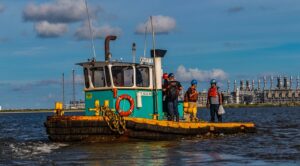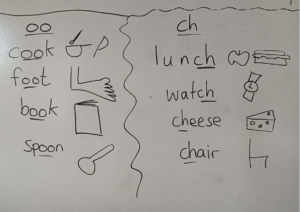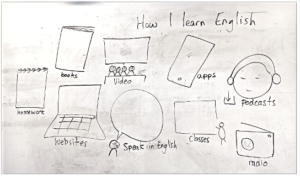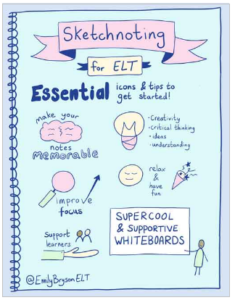Think Translation Sounds Like a Good Side Gig? Here are Some Things to Consider
Many language teachers think of translation as a way to earn extra cash, or even as a route out of teaching. In this article, I’m going to go through the discouraging and encouraging things to consider when contemplating translation work.
When I was president of the MiTiN, the Michigan chapter of the American Translators Association (pronounced “mitten”, get it?), I would often get e-mails like this:
i wanna no how i gonna get certfy like traslater i no my linguij and my englsh perfect
As is frequently repeated in the translation industry (which is larger than the music industry!) not every bilingual person can be a translator. Knowing how to drive a car doesn’t make you a mechanic, and being able to jump doesn’t make you a gymnast.
But let’s assume you are a linguistically talented person, and are looking to find out more about the encouraging and not-so-encouraging aspects of the industry.
Encouraging: there’s no shortage of words
The good news is that there is more stuff in the world that needs to be translated than there are humans capable of translating it.
The internet, increasing globalization of markets, and the growing expectation of people the world over for their media to be properly localized — not just translated — have created a great deal of demand for translation and localization, which should result in a lot of opportunity.
However…
Discouraging: there’s no shortage of translators either
More universities and other institutions have started translation degree and certificate programs, and they’re turning out masses of fresh, temporarily optimistic translators. This is glutting the market and helping drive rates down. And many of these graduates can’t find work as translators.
A friend who owned a boutique translation agency recently told me that when he started out, he got a few applications from aspiring translators a week, and he could answer them all. Flash forward to the 2020s, and he got as many as 100 applications a day – of which he obviously couldn’t answer more than a random handful.
Encouraging: networking still works
With the market so flooded with hopeful translators, it might seem futile to look for work, but it’s not as bad as it looks. Think of how most people get their first job. It’s often not from filling out applications:
At 16, I was approached by a friend and told, “The children’s home needs maintenance crew for the summer. Wanna come?” So I did, and that was my first job. The second one came because a factory owner told a nun he needed to hire someone and she called me.
So you can put together a pretty good clientele through personal connections, by visiting trade shows (salespeople whose companies send them unreadable Germlish brochures from headquarters are particularly eager), and using other more direct approaches.
You need a subject matter specialty
When I was in my 20s, a friend’s sister graduated from a prestigious university with an English writing degree and confidently went to a job fair for writers. To her shock and dismay, nobody was interested in someone with a high-status English writing degree. They told her,
We don’t need writers; we need people who know other things and can also write.
The same thing goes in the translation industry. Language has to be about something. The language skills are just a cup, and if the cup is empty, it’s got no purpose.
Discouraging: you’ll need to learn about your target industry
This means that to do decently in a translation career, you need to know something besides how to write in another language. It means you have to know at least one field like business and economics, manufacturing, medicine, or some other high-demand subject matter.
The specialty doesn’t even have to be something for which you can get what Germans like to call “a qualification”.
I read of one man who had spent years working as a disc jockey on the Reeperbahn, and he was the only person a publisher could find who not only understood all the obscure German obscenities in a series of hit novels, but could render the text smoothly in English.
So sometimes your speciality is something you just picked up along the way, even something from your first job as a kid.
Encouraging: you can teach yourself – and it can be fun
You can train yourself in a specialty. I know a young Japanese woman who went on an all-out assault to teach herself everything there is to know about automotive engineering, and with a lot of effort, she became an expert translator for the US and Japanese car industry.
One man I know had learned scuba diving and that surprisingly became useful. Some people develop a habit of reading picture encyclopedias from DK Publishing, National Geographic and others — often in more than one language.
Sometimes you can’t predict your future specialties; they just find you, and you learn them through your own research while doing the projects.

I would never have imagined I would become the go-to guy for French yogurt packaging lines or hay balers, but that’s what I developed into. However, to get there, I already needed some kind of technical background.
The flip side of having a technical specialty is knowing the importance of turning down work that’s not in your specialty.
Do you think, “The Ford salesman conquested a Toyota intender,” is a horrid, ungrammatical sentence with misused words? Then don’t take work having to do with car retailing, because in that field it’s a perfectly grammatical way of saying a salesman convinced a customer to switch car brands.
You’ll need a lot of software
The days are gone when translators propped up an original document on their desk and looked back and forth as they typed into Word. If you want better work than just the occasional dance school certificate that happens to waft by, you’ll need to set yourself up technologically.
The most important thing you’ll need is at least one computer-assisted translation tool, or CAT tool, as they’re called. The three most popular are Trados, MemoQ and Wordfast Pro, but there are many others.
Many laypeople mistakenly think that these are automated translation programs, but they’re not. They allow you to import the document and show it to you as a two-column grid, with the source language on the left and an empty column for you to type the target language on the right.
They keep track of what you’ve already translated, so you don’t have to type it again, and they also allow recycling parts of translations that have already been done by someone else. The programs also help you keep a glossary and concordance, among many other functions.
Most of the tools are developed in Europe, Quebec or Utah.
Discouraging: CAT tools are expensive
CAT tools typically cost about $600 or $700, but that’s actually good, because they used to cost around $2500 twenty years ago. There may also be an annual fee that provides you with updates and support, but it’s worth paying.

Encouraging: CAT tools come in handy in all kinds of ways
Having and knowing how to use a CAT tool can greatly increase the amount of work you get, and it also improves your quality and efficiency, especially with the quality assurance tools built into them.
The tools also save you the cost of owning other expensive software. You don’t have to subscribe to Adobe Creative Cloud for big money in order to translate InDesign layouts and other files, because your CAT tool will import them easily and spit them back out perfectly formatted.
You may say, “I already do some work as a translator, and the work I get doesn’t require a CAT tool.” That’s because you don’t have a CAT tool — just as the guy with no lawnmower never gets lawn mowing jobs.
Other types of software you’ll need to have and know how to use include optical character recognition (OCR) programs, transcription software, etc. (Adobe Acrobat is terrible at OCR, so don’t try it.)
Make sure you haven’t gone too native in your non-native language
Once I berated a project manager in the Czech Republic for sending me an English document to edit that was translated by a Czech. She replied that, “She’s American, but she’s lived here a really long time.” The woman was writing strange things like “cars BMW”, “electronics Sony” and much of her syntax was odd.
It is possible to get so absorbed in your host country that you lose your feel for your native language. If you have gone native to that point, translating into your native language might not be a good idea. Meanwhile, it’s generally considered unethical to translate into your non-native language.
Isn’t AI putting translators out of business anyway?
Yes and no. Artificial intelligence is putting some translators out of business but keep in mind what I said before — there is infinitely more material needing translation than there are humans to do the job. So some technological solution to the problem is necessary and inevitable.
Discouraging: yes, it is
However, artificial intelligence is definitely putting some translators out of business.
About five or ten years ago, the machine translation industry changed its model to something called neural machine translation, where the software teaches itself, rather than humans trying to teach it. The result was such a jump in quality that all those online translation engines people used to make fun of are now doing as well as a mediocre human translator, so there’s not really work for translators who are below average.
In fact, many in the translation business wonder how new, inexperienced translators are going to get practice. If a computer can accurately come up with a translation like, “Music lovers can get their groove on at the adjacent nightclub,” the whole game has changed.
Encouraging: only the bad ones
Artificial intelligence is not very intelligent.
It makes a lot of mistakes, so there is a lot of opportunity in what’s called “post-editing”, part of which involves fixing the language. Machine translation uses “carry out” too much, and it will use the preposition “via” more times in a short document than you’re liable to see in two years reading original English writing.
It often forms “of” chains, which is also a common problem with weak human translators: “the A of the B of the X of the Y of the Z”. Also, it can’t tell who’s doing what to whom, so working from languages with ungendered possessive pronouns, like French, it makes mistakes: “The man blew its nose.”
However, as artificial intelligence comes more into use, its weaknesses are becoming more and more obvious:
Artificial intelligence can’t see
If there are visuals, AI can’t see them and can’t take them into account when translating text related to them.
Artificial intelligence can’t deal with structural ambiguity
You still don’t know which meaning of a sentence like, “He saw that gasoline can explode,” or the headline, “TEACHER STRIKES IDLE KIDS” the AI is going to deliver.
Artificial intelligence has no sense of humor
AI can’t see or interpret a sight gag in a video, for example, so it can’t translate any text related to it appropriately. And it will just translate verbal jokes literally most of the time.
Artificial intelligence has no culture
In many translations, it’s not the specifics of someone’s words that are important, but the speech act, i.e. what the utterance is doing. AI doesn’t know the difference in how an American versus a German orders a pizza. It can’t say to itself, “This guy’s ordering a pizza,” and make the cultural switch. AI doesn’t know what an American says to chase frisky teenage boys away from his niece compared to what a Frenchman would say.
One time I realized that the AI was translating a famous line from the movie “Casablanca” back into English from a foreign language. AI can’t know that, of course, so it came up with, “It is a shock, a SHOCK!” rather than the real line:
Encouraging: humans are still indispensable
All this means that companies using machine translation are realizing that post-editing doesn’t just require a warm body to edit at a fraction of the translation rate.
Rather, it often requires an experienced, seasoned translator to do the editing for real money. It also means that translators get less and less of the translation work machines can do (Swiss real estate listings and the like) and more of the work that requires human understanding and ingenuity.
This sounds like too much. Why not just become an interpreter?
Bilingual people who don’t want to sink the money and effort into becoming a translator (someone who types) often think an easier route would be to go into interpreting. That’s just talking, after all, right?
Careful! This path is also fraught with danger.
You also need a specialty, and because, as with translation, one slip-up could get someone killed, you have to know it well. One famous case involves a college basketball player whose family brought him into emergency and told the interpreter he was “intoxicado”. Based on the interpreter’s translation, the young man was treated for intoxication, and ended up a quadriplegic. “Intoxicado” in Spanish means poisoned.
Interpreters have to follow different sets of ethics for different contexts. In court, they are supposed to act as neutral translation machines, whereas in a medical setting they have to advocate for the patient if they see something starting to go wrong.
Interpreters have to be trained to deal with “vicarious trauma”, which means taking on the emotions of the person whose speech they’re interpreting. If the interpreter breaks down crying in court, or if she faints in a medical setting, she can’t do her job.
Court interpreters have to know all idioms and even all obscenities in every dialect of their two languages. Simultaneous interpreters for conferences have to know how to work the booth technology, which is getting more and more sophisticated.
Simultaneous interpreting: easier said than done
At MiTiN we had a question on the registration form that asked if the new member did simultaneous interpreting, and 99% of them answered “yes”. After all, it’s just talking, right? Then at training seminars, when we put them in the booth with the headphones on, 85% of them couldn’t do it. Their attempt would break down in 60 to 150 seconds. This is because they weren’t trained.
Simultaneous interpreting requires extensive training, particularly of one’s short-term memory. Additionally, the brain has to be divided into at least three sectors. The first sector takes in what’s being said now, the second sector says what was just heard a second ago, and the third sector takes notes. Moreover, one has to learn the skill of not dwelling on one’s momentary mistakes, because if you’re thinking about the mistake you just made, you’re not aware of what’s happening now, and you’re a dead duck.
Encouraging
All of these things are things you can learn. There are proven programs, often with various government approval, that will teach you all the skills necessary for interpreting in various contexts.
You can do it, but it will be work
The moral of this long bahn of blather is that if you are a language instructor, and you’re fluently bilingual, you may be able to work as a translator or interpreter. But you can’t just walk in and do it on a lark. Even if you teach yourself (which I mostly did), it helps to have mentoring, and you’ll have to learn a lot of technology, ethical codes and more.
If this article has not deterred you, one of the best books for getting oriented in the translation business is “How to Succeed as a Freelance Translator” by Corinne McKay, which has been translated into a number of languages. Corinne has also written other books helpful in the profession.
***
If you enjoyed this article, you might also be interested in this post on teachers’ secret side jobs.

















